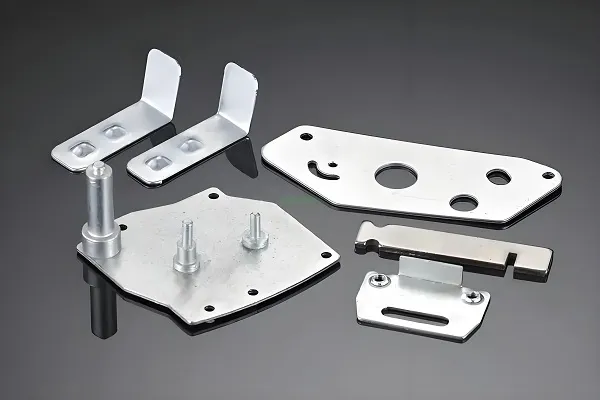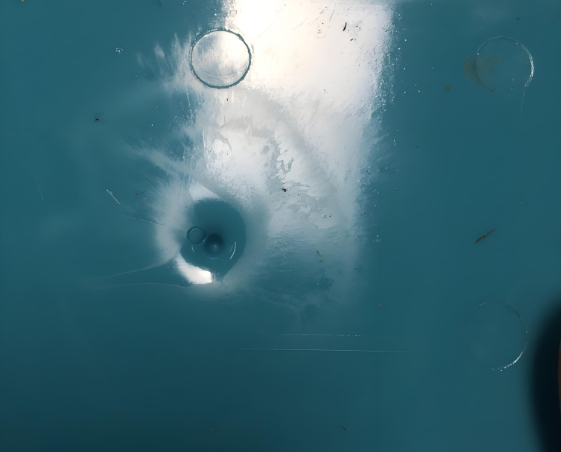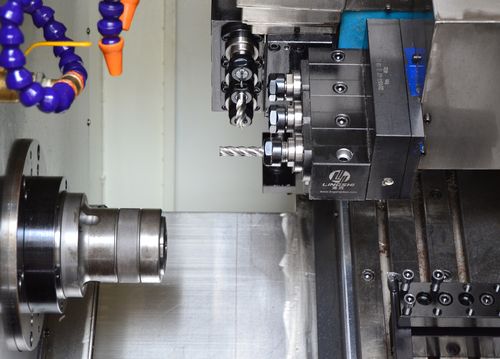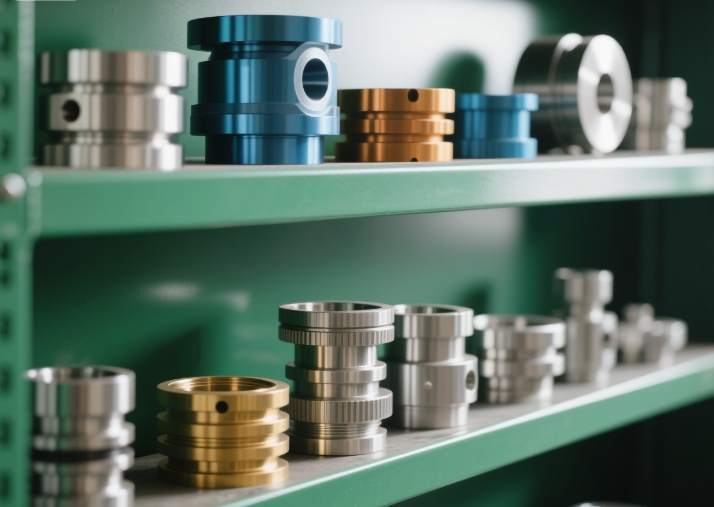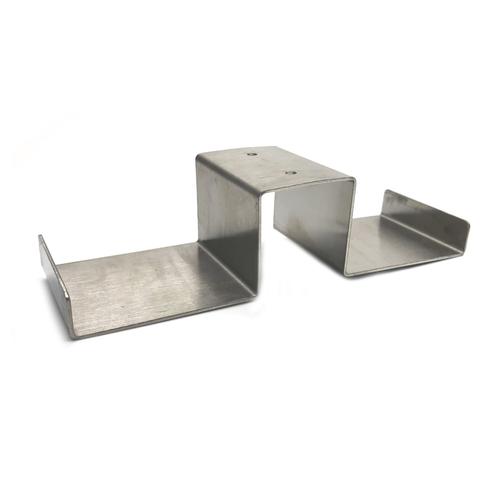
Answer
- Low-Carbon Steel (e.g., Q235, SPCC):Offers excellent ductility (elongation ≥25%), low cost, and ease of forming, making it perfect for general stamping operations like blanking, bending, and shallow drawing. Widely used in automotive brackets, appliance components, and electrical enclosures.
- Stainless Steel (e.g., 304, 430):Renowned for superior corrosion resistance and moderate strength (tensile strength ≥520MPa), ideal for medical devices, kitchenware, and outdoor products. Requires enhanced lubrication and larger die radii to mitigate work hardening and cracking risks.
- Aluminum Alloys (e.g., 5052, 6061):Lightweight (density 2.7g/cm³) with excellent formability and thermal conductivity, crucial for automotive body panels, aerospace components, and consumer electronics where high strength-to-weight ratio is essential.
- Copper Alloys (e.g., H62, C1100):Excel in electrical conductivity and ductility (elongation ≥30%), vital for electrical connectors, terminals, and heat sinks. Demand precise feeding and anti-adhesive die coatings to avoid surface defects.
Extended Explanation: Comprehensive Guide to Metal Selection for Metal Stamping
- Ductility (Elongation at Break):Measures a material’s ability to deform without fracturing. Low-carbon steel (25–40% elongation) and pure copper (45%) excel in deep drawing, while high-strength steel (≤15%) requires careful process design to prevent cracking.
- Yield Strength:Lower yield strength (e.g., aluminum 5052-O: 125MPa) reduces stamping force, ideal for complex shapes; higher yield (e.g., stainless steel 301: 515MPa) suits load-bearing parts but increases die wear.
- Work Hardening Rate (n-value):Materials like austenitic stainless steel (n=0.3) harden rapidly, necessitating intermediate annealing, while aluminum (n=0.15) allows multi-stage forming with minimal hardening.
- Tensile Strength:Critical for load-bearing components. Low-carbon steel (400MPa) suffices for general structures, while advanced high-strength steel (AHSS, 1000MPa+) is indispensable for automotive safety parts like crash beams.
- Fatigue Resistance:Copper alloys (fatigue limit ~150MPa) and titanium alloys (300MPa) are preferred for parts under cyclic loading, such as engine mounts and aerospace fasteners.
- Stainless Steel 316:Contains 2–3% molybdenum, providing exceptional resistance to chloride-induced corrosion, essential for marine and medical applications.
- Galvanized Steel:Zinc coating (8–275g/m²) protects against rust, making it the standard for outdoor equipment, automotive bodies, and construction components.
- Low-Carbon Steel:Most economical at $0.5–1.5/kg, accounting for 60% of stamping applications due to wide availability and ease of processing.
- Titanium Alloys (e.g., TC4):Premium cost ($30–50/kg) justified by high-temperature strength (up to 500℃) and corrosion resistance in aerospace and medical implants.
- Popular Grades:Q235 (China), SPCC (Japan), AISI 1008/1010 (USA)
- Mechanical Data:Yield strength 210–250MPa, tensile strength 370–430MPa, elongation 28–35%
- Advantages:
- Universal formability for all stamping operations (blanking, bending, deep drawing)
- Minimal work hardening reduces tooling stress and cost
- Excellent weldability and paintability for post-processing
- 典型应用:
- Automotive:Chassis brackets, wheel hubs, engine covers
- Home Appliances:Washing machine drums, refrigerator frames
- Electronics:Electrical enclosures, battery cases
- Processing Tips:
- Blanking clearance: 5–10% of material thickness to control burr formation
- Use water-based lubricants for eco-friendly production
- Apply anti-rust coatings for long-term storage
- Properties:Non-magnetic, high ductility (40% elongation), excellent resistance to atmospheric and chemical corrosion
- Applications:Medical instruments (surgical trays), food processing equipment, decorative panels for buildings
- Challenges:
- High work hardening requires TiN/TiCN die coatings to reduce friction (friction coefficient target: 0.15–0.2)
- 20–30% higher forming force than carbon steel due to yield strength (205MPa)
- Properties:Magnetic, lower ductility (22% elongation), better thermal conductivity (26W/m·K vs 304’s 16W/m·K)
- Applications:Automotive exhaust components, appliance trim panels, heating elements
- Processing Tips:
- Die radii should be 8–12× material thickness to prevent edge cracking in bending
- Use nitrogen shielding during welding to avoid carbide precipitation
- Properties:High ductility (20–25% elongation), marine-grade corrosion resistance, density 2.7g/cm³
- Applications:Aircraft wing skins, automotive door panels, beverage cans (via deep drawing)
- Advantages:
- 60% lighter than steel, critical for automotive lightweighting to improve fuel efficiency
- Natural oxide layer provides surface protection without additional coating
- Properties:Yield strength 240MPa (T6 temper), good extrudability, moderate corrosion resistance
- Applications:Structural components, bicycle frames, electronic heat sinks
- Challenges:
- Prone to galling (die sticking); require diamond-like carbon (DLC) coatings or heavy-duty lubricants
- Higher springback (due to low modulus 70GPa) necessitates over-bending in CNC programs
- Properties:Elongation 30%, good machinability, electrical conductivity 28MS/m
- Applications:Electrical connectors, plumbing fittings, decorative hardware
- Advantages:
- Balances ductility and strength for intricate stamping of small parts
- Low friction coefficient (0.15) reduces lubrication requirements
- Properties:Highest electrical conductivity (IACS 100%), soft (50–80HV), elongation 45%
- Applications:Bus bars, heat exchangers, RF shielding components
- Limitations:
- High cost ($8–15/kg) restricts use to high-conductivity critical parts
- Susceptible to oxidation at temperatures >200℃, requiring nickel plating
- Properties:Lightest structural metal (density 1.8g/cm³), elongation 8–12%, good damping capacity
- Applications:Automotive steering wheels, laptop cases, aerospace brackets (weight-sensitive parts)
- Processing Requirements:
- Pre-heat to 200–300℃ to improve formability and reduce cracking risk
- Use dry lubricants (graphite powder) to prevent hydrogen embrittlement
- Strict safety measures due to high flammability during machining
- Properties:Strength-to-weight ratio 19 (vs steel 7), operating temperature -253℃ to 600℃, excellent corrosion resistance
- Applications:Aerospace fuselage frames, medical implants (hip/knee prostheses), racing car components
- Challenges:
- Extremely high material ($30–50/kg) and tooling costs (specialized carbide dies)
- Low thermal conductivity (15W/m·K) requires frequent die cooling to prevent heat accumulation
- Consumer Electronics (Phone Cases):Aluminum 6061 (lightweight, good anodizing properties) or Magnesium AZ31 (ultra-light, EMI shielding)
- Power Electronics (Bus Bars):Pure copper with nickel plating (oxidation resistance, low electrical resistance)
- MEMS Sensors:Stainless Steel 304 (biocompatibility) or Titanium (corrosion resistance in harsh environments)
- Surgical Instruments:Stainless Steel 316L (biocompatible, sterile processable, Ra≤0.2μm surface finish)
- Implantable Devices:Titanium Grade 23 (ASTM F67, osseointegration capability, corrosion resistance in body fluids)
- Key Requirement:Zero burrs and precise dimensions to meet ISO 13485 standards.
- High-Altitude Structures:Titanium Alloys (temperature resistance up to 500℃, fatigue resistance)
- Landing Gear Parts:High-Strength Steel (AISI 4340, tensile strength 1600MPa, stress tolerance)
- Weight-Critical Components:Magnesium Alloys (AZ91D, 30% lighter than aluminum, ideal for non-load-bearing parts)
- Challenges:
- Accelerated die wear (3x faster than low-carbon steel) due to high hardness
- Significant springback (up to 5° in bending) requiring CNC program compensation
- Solutions:
- Use carbide die inserts (e.g., YG15) instead of tool steel for wear resistance
- Thermoforming: Heat to 900℃, stamp while hot, and quench in dies to achieve martensitic strength (≥1500MPa)
- Progressive die design with stress-relief notches to reduce strain concentration
- Applications:High-temperature components (jet engine parts, chemical process valves)
- Processing Tips:
- Cryogenic blanking: Cool material to -196℃ with liquid nitrogen to improve edge quality and reduce burrs
- Die surface coated with cubic boron nitride (CBN) for extreme wear resistance (hardness 3000HV)
- Lower stamping speed (50–100 strokes/min) to manage heat generation
- Clad Metals (Steel-Aluminum Composite):Bonded layers for hybrid properties (steel for strength, aluminum for weight), processed with controlled pressure (5–10MPa) to prevent delamination
- Metal Matrix Composites (MMCs, e.g., Al-SiC):Require ultrasonic vibration during stamping (20–40kHz) to reduce ceramic particle breakage and improve formability
- Aluminum-Lithium Alloys (2099, 1420):10% lighter than conventional aluminum, with improved stiffness (modulus +10%), gaining traction in aerospace for fuel-efficient aircraft
- Advanced High-Strength Steels (AHSS):Dual-phase (DP) and transformation-induced plasticity (TRIP) steels enable 20–30% weight reduction in automotive structures while maintaining crash safety
- Recycled Aluminum:Post-consumer recycled content ≥90%, compliant with EU Green Deal and circular economy goals, reducing carbon footprint by 40%
- Low-Carbon Steel:Produced via hydrogen-based direct reduction (H2-DRI), cutting CO2 emissions by 50% compared to traditional blast furnaces
- Graphene-Coated Steel:Improves corrosion resistance (salt spray test >1000 hours) and lubricity (friction coefficient 0.12), compatible with all stamping operations
- Self-Lubricating Dies for Magnesium:DLC coatings embedded with MoS2 nanoparticles reduce lubricant usage by 70%, addressing environmental and safety concerns
- Ultra-Thin Stainless Steel (t ≤ 0.05mm, e.g., 301-H):High yield strength (>800MPa) ensures dimensional stability in micro-electromechanical systems (MEMS) components
- Nano-Crystalline Copper:Grain size <100nm provides 50% higher strength than conventional copper while maintaining 20% elongation, ideal for miniaturized connectors
- Erichsen Test (ISO 20482):Measures deep drawing capacity; higher ET value (e.g., aluminum 5052-O: 9mm, stainless 304: 12mm) indicates better formability
- Bend Test (ASTM E290):Determines minimum bend radius without cracking (e.g., 1.5t for 304 stainless, 1t for low-carbon steel)
- Swift Cup Test:Evaluates limiting drawing ratio (LDR = D/d0) for deep drawing applications (LDR ≥2.2 for low-carbon steel, 1.8 for stainless steel)
- Friction Coefficient Measurement:Using a pin-on-disk tester under stamping-relevant loads (5–50kN), target <0.2 for most metals, <0.15 for aluminum to prevent galling
- Wear Resistance Test:Accelerated die life testing with material samples, recording number of strokes until edge wear >0.02mm (e.g., 50,000 strokes for carbon steel, 20,000 strokes for stainless steel)
- Tensile Testing (ASTM E8):Confirms yield strength, tensile strength, and elongation at break, critical for load-bearing part design
- Hardness Testing (Rockwell HRB/HRC):Monitors work hardening during multi-stage stamping, ensuring parts meet post-process strength requirements

